Andrew Norman, composer
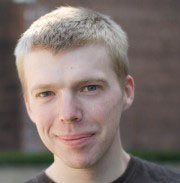
 Andrew Norman (b. 1979) is a composer of chamber and orchestral music. A native Midwesterner raised in central California, Andrew studied the piano and viola before attending the University of Southern California and Yale. His teachers and mentors include Martha Ashleigh, Donald Crockett, Stephen Hartke, Stewart Gordon, Aaron Kernis, Ingram Marshall, and Martin Bresnick.A lifelong enthusiast for all things architectural, Andrew writes music that is often inspired by forms and textures he encounters in the visual world.
Andrew Norman (b. 1979) is a composer of chamber and orchestral music. A native Midwesterner raised in central California, Andrew studied the piano and viola before attending the University of Southern California and Yale. His teachers and mentors include Martha Ashleigh, Donald Crockett, Stephen Hartke, Stewart Gordon, Aaron Kernis, Ingram Marshall, and Martin Bresnick.A lifelong enthusiast for all things architectural, Andrew writes music that is often inspired by forms and textures he encounters in the visual world.
John Cage
 John Milton Cage Jr. (September 5, 1912 – August 12, 1992) was an American composer, music theorist, writer, and artist. A pioneer of indeterminacy in music, electroacoustic music, and non-standard use of musical instruments, Cage was one of the leading figures of the post-war avant-garde. Critics have lauded him as one of the most influential American composers of the 20th century. He was also instrumental in the development of modern dance, mostly through his association with choreographer Merce Cunningham, who was also Cage’s romantic partner for most of their lives.
John Milton Cage Jr. (September 5, 1912 – August 12, 1992) was an American composer, music theorist, writer, and artist. A pioneer of indeterminacy in music, electroacoustic music, and non-standard use of musical instruments, Cage was one of the leading figures of the post-war avant-garde. Critics have lauded him as one of the most influential American composers of the 20th century. He was also instrumental in the development of modern dance, mostly through his association with choreographer Merce Cunningham, who was also Cage’s romantic partner for most of their lives.
Henry Cowell
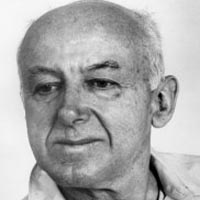
Henry Cowell (1897-1965), was born in Menlo Park, California. The “godfather of the American experimental tradition” (in the words of Alex Ross), got an early start. While still young Cowell’s mother encouraged him to purchase a piano and, something of a child prodigy, he would give private recitals featuring his early compositions, including Anger Dance (1914).
Lou Harrison
 Lou Harrison (1917 – 2003) was an American musical pioneer, composing works that incorporated Javanese gamelan and non-Western influences and explored the use of alternate tunings and new instruments. Spending much of his youth on the West Coast, he studied with Henry Cowell and Arnold Schoenberg, before moving to New York to work with Virgil Thomson. In addition to composing, Harrison also worked tirelessly promote the music of Charles Ives, bringing the composer to the notice of the musical world and conducting the first performances if his Symphony No. 3.
Lou Harrison (1917 – 2003) was an American musical pioneer, composing works that incorporated Javanese gamelan and non-Western influences and explored the use of alternate tunings and new instruments. Spending much of his youth on the West Coast, he studied with Henry Cowell and Arnold Schoenberg, before moving to New York to work with Virgil Thomson. In addition to composing, Harrison also worked tirelessly promote the music of Charles Ives, bringing the composer to the notice of the musical world and conducting the first performances if his Symphony No. 3.
Michael Harrison
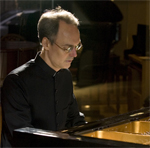 Michael Harrison, composer and pianist, has been called “an American Maverick” by Philip Glass. Through his expertise in “just intonation” tunings, Indian ragas and rhythmic cycles, he has created “a new harmonic world…of vibrant sound” (The New York Times). With a personal style that transcends the ages, his music is both forward looking and deeply rooted in different forms of traditional music.
Michael Harrison, composer and pianist, has been called “an American Maverick” by Philip Glass. Through his expertise in “just intonation” tunings, Indian ragas and rhythmic cycles, he has created “a new harmonic world…of vibrant sound” (The New York Times). With a personal style that transcends the ages, his music is both forward looking and deeply rooted in different forms of traditional music.
Glenn Kotche
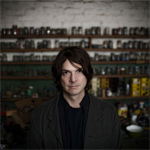 For a percussionist and composer as energetic, inquisitive and versatile as Glenn Kotche, it’s his sense of balance—his ability to thrive in different and seemingly disparate worlds—that really makes him stand out as a musician. Since 2001, Kotche has been the rhythmic anchor in Wilco, one of the most beloved rock bands on the planet.
For a percussionist and composer as energetic, inquisitive and versatile as Glenn Kotche, it’s his sense of balance—his ability to thrive in different and seemingly disparate worlds—that really makes him stand out as a musician. Since 2001, Kotche has been the rhythmic anchor in Wilco, one of the most beloved rock bands on the planet.
David Lang
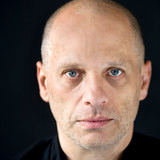 Passionate, prolific, and complicated, composer David Lang embodies the restless spirit of invention. Lang is at the same time deeply versed in the classical tradition and committed to music that resists categorization, constantly creating new forms. In the words of The New Yorker, “With his winning of the Pulitzer Prize for the little match girl passion (one of the most original and moving scores of recent years), Lang, once a postminimalist enfant terrible, has solidified his standing as an American master.”
Passionate, prolific, and complicated, composer David Lang embodies the restless spirit of invention. Lang is at the same time deeply versed in the classical tradition and committed to music that resists categorization, constantly creating new forms. In the words of The New Yorker, “With his winning of the Pulitzer Prize for the little match girl passion (one of the most original and moving scores of recent years), Lang, once a postminimalist enfant terrible, has solidified his standing as an American master.”
Steve Reich
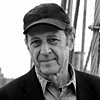 From his early taped speech pieces It’s Gonna Rain (1965) and Come Out (1966) to his and video artist Beryl Korot’s digital video opera Three Tales (2002), Steve Reich’s path has embraced not only aspects of Western Classical music, but the structures, harmonies, and rhythms of non-Western and American vernacular music, particularly jazz. “There’s just a handful of living composers who can legitimately claim to have altered the direction of musical history and Steve Reich is one of them,” states The Guardian (London).
From his early taped speech pieces It’s Gonna Rain (1965) and Come Out (1966) to his and video artist Beryl Korot’s digital video opera Three Tales (2002), Steve Reich’s path has embraced not only aspects of Western Classical music, but the structures, harmonies, and rhythms of non-Western and American vernacular music, particularly jazz. “There’s just a handful of living composers who can legitimately claim to have altered the direction of musical history and Steve Reich is one of them,” states The Guardian (London).
Bright Sheng
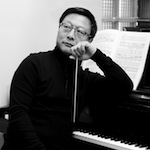
MacArthur Fellow Bright Sheng was born on December 6th, 1955, in Shanghai, China, and moved to New York in 1982. He is currently the Leonard Bernstein Distinguished University Professor at University of Michigan, and the Distinguished Artist-in-Residence at Aaron Copland School of Music of Queens College, CUNY.
Rand Steiger
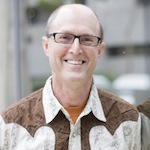 Rand Steiger’s music has been commissioned and performed by many ensembles, including the American Composers Orchestra, Boston Musica Viva, Ensemble Intercontemporain, International Contemporary Ensemble, Lontano, Los Angeles Chamber Orchestra, NYNME, Prism Quartet, San Diego Symphony, San Francisco Contemporary Music Players, St. Paul Chamber Orchestra, Talea Ensemble, and the Los Angeles Philharmonic, where he served as Composer Fellow. Soloists he has composed for include Matthew Barley, Maya Beiser, Claire Chase, Daniel Druckman, Peter Evans, Alan Feinberg, George Lewis, Susan Narucki, Vicki Ray, and Steven Schick.
Rand Steiger’s music has been commissioned and performed by many ensembles, including the American Composers Orchestra, Boston Musica Viva, Ensemble Intercontemporain, International Contemporary Ensemble, Lontano, Los Angeles Chamber Orchestra, NYNME, Prism Quartet, San Diego Symphony, San Francisco Contemporary Music Players, St. Paul Chamber Orchestra, Talea Ensemble, and the Los Angeles Philharmonic, where he served as Composer Fellow. Soloists he has composed for include Matthew Barley, Maya Beiser, Claire Chase, Daniel Druckman, Peter Evans, Alan Feinberg, George Lewis, Susan Narucki, Vicki Ray, and Steven Schick.
James Tenney
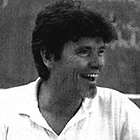 James Tenney (1934–2006) was born in Silver City, New Mexico, and grew up in Arizona and Colorado, where he received his early training as a pianist and composer. He attended the University of Denver, the Juilliard School of Music, Bennington College, and the University of Illinois. His teachers and mentors included Eduard Steuermann, Chou Wen-Chung, Lionel Nowak, Carl Ruggles, Lejaren Hiller, Kenneth Gaburo, Edgard Varèse, Harry Partch, and John Cage.
James Tenney (1934–2006) was born in Silver City, New Mexico, and grew up in Arizona and Colorado, where he received his early training as a pianist and composer. He attended the University of Denver, the Juilliard School of Music, Bennington College, and the University of Illinois. His teachers and mentors included Eduard Steuermann, Chou Wen-Chung, Lionel Nowak, Carl Ruggles, Lejaren Hiller, Kenneth Gaburo, Edgard Varèse, Harry Partch, and John Cage.
Anna Thorvaldsdottir
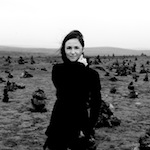
Anna Thorvaldsdottir is a composer who frequently works with large sonic structures that tend to reveal the presence of a vast variety of sustained sound materials, reflecting her sense of imaginative listening to landscapes and nature. Her music tends to portray a flowing world of sounds with an enigmatic lyrical atmosphere.
Chinary Ung
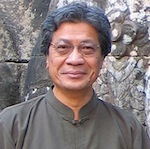 Chinary Ung was the first American composer to win the highly coveted and international Grawemeyer Award (1989), sometimes called the Nobel prize for music composition. Among other honors, Ung has received awards from The Kennedy Center (Friedheim award), The American Academy of Arts and Letters, Asia Foundation, Asian Cultural Council, Rockefeller Foundation, Ford Foundation, Guggenheim Foundation, Joyce Foundation, and The National Endowment for the Arts.
Chinary Ung was the first American composer to win the highly coveted and international Grawemeyer Award (1989), sometimes called the Nobel prize for music composition. Among other honors, Ung has received awards from The Kennedy Center (Friedheim award), The American Academy of Arts and Letters, Asia Foundation, Asian Cultural Council, Rockefeller Foundation, Ford Foundation, Guggenheim Foundation, Joyce Foundation, and The National Endowment for the Arts.
Huiran Wang
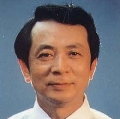 Wang Huiran 王惠然 was born in 1936 in Shanghai, China. He started learning pipa and liuqin (a smaller version of Chinese lute) at the age of 13 and became profesional soloist in several musical troups during his early career. In 1957 Wang was selected to go to Moscau State Radio Station and recorded several traditional pipa solo pieces. His own composition “Merry dancing under the moon” received excellent comments. In 1960, Wang composed the celebrated “Dance of the Yi people” which has becomes the classical pipa composition that can be heard almost every where in China.
Wang Huiran 王惠然 was born in 1936 in Shanghai, China. He started learning pipa and liuqin (a smaller version of Chinese lute) at the age of 13 and became profesional soloist in several musical troups during his early career. In 1957 Wang was selected to go to Moscau State Radio Station and recorded several traditional pipa solo pieces. His own composition “Merry dancing under the moon” received excellent comments. In 1960, Wang composed the celebrated “Dance of the Yi people” which has becomes the classical pipa composition that can be heard almost every where in China.
Julia Wolfe
 Drawing inspiration from folk, classical, and rock genres, Julia Wolfe’s music brings a modern sensibility to each while simultaneously tearing down the walls between them.
Drawing inspiration from folk, classical, and rock genres, Julia Wolfe’s music brings a modern sensibility to each while simultaneously tearing down the walls between them.
Her music is distinguished by an intense physicality and a relentless power that pushes performers to extremes and demands attention from the audience. In the words of the Wall Street Journal, Wolfe has “long inhabited a terrain of [her] own, a place where classical forms are recharged by the repetitive patterns of minimalism and the driving energy of rock.”
Iannis Xenakis
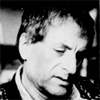
Iannis Xenakis is one of the leaders of modernism in music, a hugely influential composer, particularly in the later 1950s and 1960s, when he was experimenting with compositional techniques that soon entered the basic vocabulary of the twentieth-century avant garde.
Evan Ziporyn
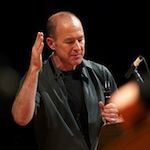 Evan Ziporyn (b. 1959, Chicago) makes music at the crossroads between genres and cultures, east and west. He studied at Eastman, Yale & UC Berkeley with Joseph Schwantner, Martin Bresnick, & Gerard Grisey. He first traveled to Bali in 1981, studying with Madé Lebah, Colin McPhee’s 1930s musical informant. He returned on a Fulbright in 1987.
Evan Ziporyn (b. 1959, Chicago) makes music at the crossroads between genres and cultures, east and west. He studied at Eastman, Yale & UC Berkeley with Joseph Schwantner, Martin Bresnick, & Gerard Grisey. He first traveled to Bali in 1981, studying with Madé Lebah, Colin McPhee’s 1930s musical informant. He returned on a Fulbright in 1987.
Terry Riley
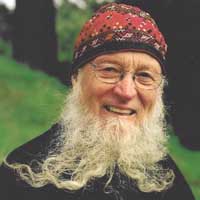 Terry Riley (1935 -) is often credited with the dual title of being the father of both the Minimalist movement and psychedelic rock. His career has had a profound influence on a range of musicians and composers, including Steve Reich, Philip Glass and John Adams, as well groups such as The Who, The Soft Machine and Tangerine Dream. His work today includes close collaboration with the Kronos Quartet. Riley’s pieces showcase both his his experiments in process music and his deep study of Indian classical forms, resulting in a trailblazing career that has spanned over half a century.
Terry Riley (1935 -) is often credited with the dual title of being the father of both the Minimalist movement and psychedelic rock. His career has had a profound influence on a range of musicians and composers, including Steve Reich, Philip Glass and John Adams, as well groups such as The Who, The Soft Machine and Tangerine Dream. His work today includes close collaboration with the Kronos Quartet. Riley’s pieces showcase both his his experiments in process music and his deep study of Indian classical forms, resulting in a trailblazing career that has spanned over half a century.
John Adams
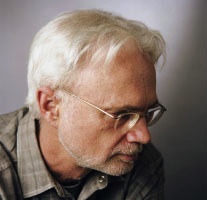 Composer, conductor, and creative thinker – John Adams occupies a unique position in the world of American music. His works, both operatic and symphonic, stand out among contemporary classical compositions for their depth of expression, brilliance of sound, and the profoundly humanist nature of their themes. Over the past 25 years, Adams’s music has played a decisive role in turning the tide of contemporary musical aesthetics away from academic modernism and toward a more expansive, expressive language, entirely characteristic of his New World surroundings.
Composer, conductor, and creative thinker – John Adams occupies a unique position in the world of American music. His works, both operatic and symphonic, stand out among contemporary classical compositions for their depth of expression, brilliance of sound, and the profoundly humanist nature of their themes. Over the past 25 years, Adams’s music has played a decisive role in turning the tide of contemporary musical aesthetics away from academic modernism and toward a more expansive, expressive language, entirely characteristic of his New World surroundings.
Eivind Buene
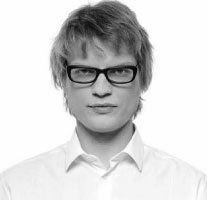 Eivind Buene studied pedagogics and composition at the Norwegian State Academy of Music from 1992 to 1998, and in 1999 and 2000 he was composer in residence with the Oslo Sinfonietta. Since 2000 he has been a freelance composer living and working in Oslo, writing for a wide array of ensembles and orchestras. He has recieved commissions from among others Ensemble Intercontemporain, Birmingham Contemporary Music Group, Fondation Royaumont and most of the Norwegian Orchestras and ensembles.
Eivind Buene studied pedagogics and composition at the Norwegian State Academy of Music from 1992 to 1998, and in 1999 and 2000 he was composer in residence with the Oslo Sinfonietta. Since 2000 he has been a freelance composer living and working in Oslo, writing for a wide array of ensembles and orchestras. He has recieved commissions from among others Ensemble Intercontemporain, Birmingham Contemporary Music Group, Fondation Royaumont and most of the Norwegian Orchestras and ensembles.
Hafliði Hallgrímsson
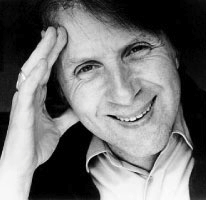 One of the most important figures in the current flowering of Icelandic music is Hafliði Hallgrímsson, born in 1941 in the small town of Akureyri on the north coast of Iceland. He began playing the cello at the age of ten and studied in Reykjavik and Accademia Santa Cecilia in Rome. On returning from Rome, he continued his studies in London with Derek Simpson at the Royal Academy of Music and was awarded the coveted Madame Suggia Prize in 1966.
One of the most important figures in the current flowering of Icelandic music is Hafliði Hallgrímsson, born in 1941 in the small town of Akureyri on the north coast of Iceland. He began playing the cello at the age of ten and studied in Reykjavik and Accademia Santa Cecilia in Rome. On returning from Rome, he continued his studies in London with Derek Simpson at the Royal Academy of Music and was awarded the coveted Madame Suggia Prize in 1966.
Bent Sørensen
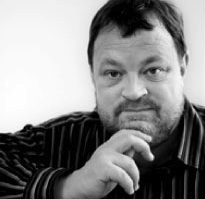 “It reminds me of something I’ve never heard.” Such was the spontaneous reaction of the Norwegian composer Arne Nordheim upon hearing a work by Bent Sørensen. And it is not easy to imagine a more strangely to-the-point description of the ambiguous, almost paradoxical expressive idiom of this unique composer, who is without doubt the leading Danish composer of his generation. Sørensen’s music is not recycled, in no way does it rely on the yellowing pages of history for its musical nourishment his musical language is undeniably of the present day, both aesthetically and technically.
“It reminds me of something I’ve never heard.” Such was the spontaneous reaction of the Norwegian composer Arne Nordheim upon hearing a work by Bent Sørensen. And it is not easy to imagine a more strangely to-the-point description of the ambiguous, almost paradoxical expressive idiom of this unique composer, who is without doubt the leading Danish composer of his generation. Sørensen’s music is not recycled, in no way does it rely on the yellowing pages of history for its musical nourishment his musical language is undeniably of the present day, both aesthetically and technically.
Carl Ruggles
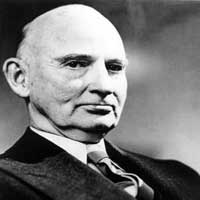 Writing only 84 minutes of music in the entirety of his career, Carl Ruggles’ eight published works nonetheless attest to his complete dedication to atonality and ultra-modernism. Ruggle’s prickly personality was paired with a meticulously deliberate compositional process – Michael Tilson Thomas recalled visiting the composer and hearing him play “every sonority, every chord . . . once, twice, 10, 20, 50, perhaps hundreds of times, as loud as he could, because as he said to me, ‘I thought that if I could still stand the sound . . . after a hundred times or so, it would sound pretty good a couple of hundred years from now!”
Writing only 84 minutes of music in the entirety of his career, Carl Ruggles’ eight published works nonetheless attest to his complete dedication to atonality and ultra-modernism. Ruggle’s prickly personality was paired with a meticulously deliberate compositional process – Michael Tilson Thomas recalled visiting the composer and hearing him play “every sonority, every chord . . . once, twice, 10, 20, 50, perhaps hundreds of times, as loud as he could, because as he said to me, ‘I thought that if I could still stand the sound . . . after a hundred times or so, it would sound pretty good a couple of hundred years from now!”

